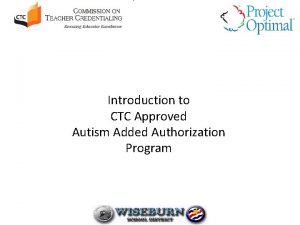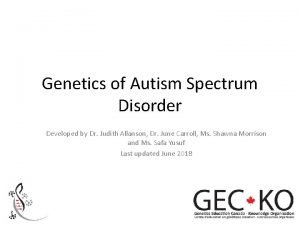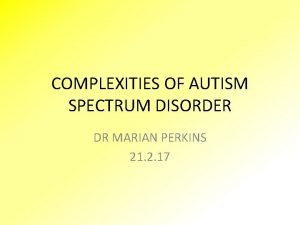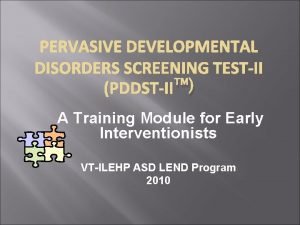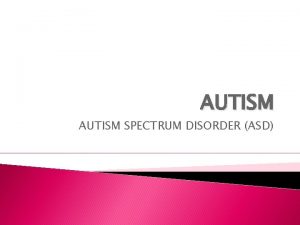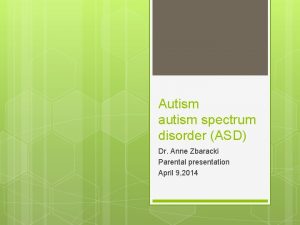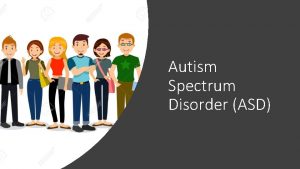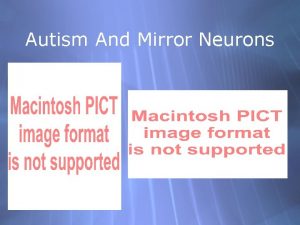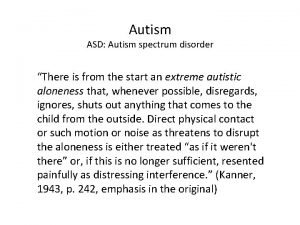What is ASD Autism is a developmental disorder







- Slides: 7


What is ASD? • Autism is a developmental disorder that affects how an individual perceives the world. • It is associated with profound problems of speech, behaviour and social relationships. • High-functioning autism (HFA) and Asperger’s Syndrome (AS)

HFA ? or AS ? Social skills Severely delayed Restricted interests Thing-based (trains) Fact-based (train schedules) Language Delayed speech; few words; Advanced vocab; speak regression; echolalia early; odd speech; literal; poor pragmatics IQ scores (>70) Nonverbal skills > verbal skills Verbal skills > nonverbal skills Motor abilities Often typical in early life Clumsy; poor coordination Gender ratio 4 males to 1 female 10 -15 males to 1 female Genetics Highly heritable Even highly heritable Prognosis Better than in children with both autism & Intellectual disability Educational outcomes better than those with HFA

Characteristics • Stereotyped behaviours – Obsessed about a certain topic or object – Repetitive actions or movements – Fixate on parts of an object • Communication deficits – No speech – Delayed speech – Echoalia • Social interaction deficits – Little or no eye contact – Unemotional facial expressions – No interactive dialogue


Strengths • Good attention to detail • Deep narrow interests • Islets of ability – Splinter skills (often memorize and have obsessive pre-occupations with trivia and obscure information) – Talented skills (more highly developed and specialized skill such as working out difficult calculations mentally) – Prodigious skills (rarest and remarkable – e. g. capability to play an entire concerto on the piano after listening it only once)

Some Useful Tips… • Keeping predictability/ orderliness/ sameness • Seating arrangement (e. g. front middle seat) • Incorporate visual learning modes


